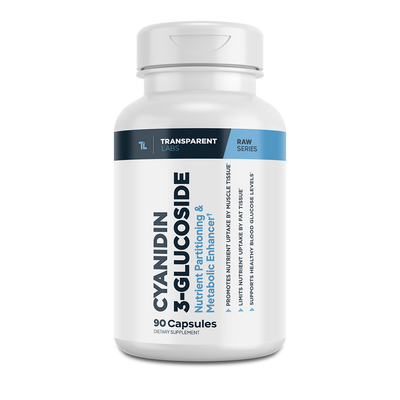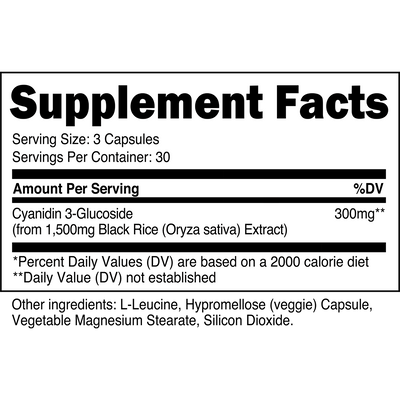What Are the Symptoms of Heavy Metal Toxicity?

Heavy Metals: What Are They and Why Are They Harmful?
Heavy metals are all around us. From the food we eat to the air we breathe, there is a good chance every one of us has had some exposure to heavy metals at some point in our lives.
In small amounts, most of these heavy metals can be beneficial to maintaining good health. Like anything else we do or consume on a daily basis, moderation is key.
With heavy metal exposure, problems tend to arise when we are exposed to toxic amounts.
Throughout this article, we will explore heavy metal poisoning in terms of what it is, what causes it, and the most common symptoms of heavy metal toxicity. Follow along to find out how to identify heavy metal toxicity before it can become detrimental to your health and daily functioning.
What is Heavy Metal Poisoning?
Heavy metal toxicity, also known as heavy metal poisoning, is dangerous for our health for many reasons. From brain damage to cardiovascular disease and in some cases even complete kidney failure, both acute and chronic exposure can pose a significant risk to us [1].
Typically, exposure to heavy metals can disrupt our regular bodily functions in one of two ways:
-
Heavy metals can accumulate in our bodies (through consumption, inhalation, or direct absorption through the skin) and wreak havoc on our vital glands and organs including our heart, brain, bones, kidneys, liver, and so on.
-
Heavy metals can replace vital nutritional minerals such as calcium, iron, and zinc, thereby affecting their biological function.
The four most common toxic metals that are associated with poisoning include lead, mercury, arsenic, and cadmium.
Each of these toxic metals shares similarities in both their acute and chronic exposure symptoms. Common acute exposure symptoms include confusion, numbness, nausea, and vomiting while chronic exposure symptoms include headaches, abdominal pain, weakness, muscle and joint pain, and constipation [2].
Let’s take a closer look at each of these four heavy metals, where they come from, and how they affect us.
Lead Poisoning
Lead poisoning is a common yet incredibly harmful heavy metal toxin that can enter our skin or lungs from the environment or into our digestive system when we eat or drink something contaminated by lead.
Where Does It Come From?
Lead is an abundant heavy metal in our environment. In fact, a large quantity of lead is released into the air during coal, oil, and waste-burning. Due to its constant use across the globe for mining and other metal-based industrial practices, lead poising is growing to be a serious threat to humans.
Lead poisoning is typically caused by months or even years of exposure in small amounts through inhalation at home, industrial exposure in the mining field or other occupational exposure to lead such as with construction, manufacturing, transportation, and so on.
Other sources of lead exposure include [3]:
-
Lead paint fumes
-
Unfiltered water
-
Lead pipes and imported canned goods
-
Improperly coated food containers, plates, and cookware
-
Insecticides, herbicides, and pesticides
Symptoms of lead poisoning
Lead exposure can be highly poisonous and can damage every organ in the human body. Lead poisoning is proven to cause high blood pressure, anemia, brain damage, and even impair reproductive health in both men and women [4].
Since infants and young children are especially sensitive to lead toxicity, even acute lead poisoning can contribute to behavioral problems, learning disorders, and long-term neurological complications [5].
Mercury Poisoning
Mercury is another common heavy metal that can pose a risk to our health through overconsumption or chronic inhalation.
Where Does It Come From?
Similar to lead, mercury is also found in our environment through various industrial practices. The key difference is that heavy metal poisoning occurs from consuming too much methylmercury or “organic mercury” in seafood products.
While all fish products have some level of mercury, some are far worse than others. For example, farmed seafood tends to have higher amounts of heavy metals, toxins, pathogens, and environmental contaminants compared to wild seafood. In the effort to prevent heavy metal poisoning, it's beneficial to avoid consuming certain fish like tuna, marlin, swordfish, and king mackerel which are known to contain higher levels of mercury [6].
Symptoms of Mercury Poisoning
Over time, mercury poisoning can cause lung damage, vision impairments, brain damage, and gastrointestinal symptoms. Since mercury exposure involves the consumption of fish, it tends to affect the lining of the gut and kidneys as well [7].
Arsenic Poisoning
Arsenic toxicity is a global health concern that affects millions of people, from infants to seniors.
Where Does It Come From?
Arsenic is both naturally occurring in fish and shellfish or as a result of mining, ore smelting, or industrial processing.
Inorganic arsenic is also found in abundance in our soils, sediments, and groundwater.
Unfortunately for us, rice tends to take up the arsenic from soil and water, creating the darker tint surrounding brown rice grains. Compared to white rice, brown rice is shown to have 80% more arsenic [8].
Symptoms of Arsenic Poisoning
Like all the other heavy metals, overexposure to arsenic can cause a range of adverse health problems.
Since absorptions of arsenic typically occur through ingestion, arsenic is responsible for inactivating 200+ enzymes in the gut involved in essential cellular pathways. As a result, acute arsenic poisoning causes symptoms of nausea, abdominal pain, and severe diarrhea while chronic poisoning can lead to multisystem inflammatory disease [9].
Cadmium Poisoning
Cadmium is a lesser-known heavy metal that can be considered a “cancer-causing” agent.
Where Does It Come From?
Cadmium is a natural heavy metal found in mineral form in most soil and rocks including mineral fertilizers and coal.
One of the most common ways cadmium exposure occurs in the general population is by ingesting certain foods or smoking cigarettes. As one of many forms of ingested metals, cadmium is found in relatively high quantities in dark green leafy vegetables such as lettuce, spinach, and broccoli [10].
Symptoms of Cadmium Poisoning
Cadmium poisoning can take a toll on a wide range of systems within our body causing skeletal, urinary, cardiovascular, nervous, reproductive, and respiratory symptoms. During long-term exposure, many people report experiencing decreased lung and kidney function (i.e. acute renal failure) [11].
Inhalation of cadmium from tobacco use tends to result in heavy metal poisoning symptoms similar to metal fume fever including fever, chills, chest pain, headache, and malaise.
Heavy Metal Poisoning Detection and Treatment

If you’re experiencing heavy metal poisoning, receiving treatment as early as possible is critical.
If you’re suffering from any of the described symptoms above, speak to your medical provider immediately for treatment. A heavy metal toxicity test is usually required in the form of a heavy metal blood test or urine analysis.
If these heavy metals are detected in toxic amounts, treatment often includes either medication, chelating agents, or a combination of the two.
Chelating agents are chemical compounds that react with heavy metal ions to form a more stable, water-soluble complex. Chelation therapy is used to detox the body by binding to toxic heavy metals in the bloodstream and transporting them out of the body through either the kidneys via urine or through the liver in the form of bile [12].
Examples of foods that work as chelating agents include cilantro, parsley, alfalfa, chlorella, and blue-green algae, which can be found in Transparent Labs Prebiotic Greens.








